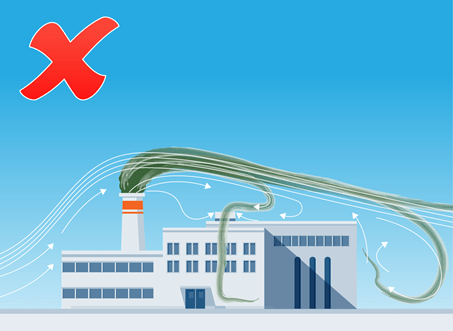A stack is a chimney that releases gases into the outside air. It releases gases high and fast enough to widely disperse the odour emissions. This reduces the impact on neighbours, including:
- hospitals
- schools
- playgrounds.
You may need to treat odorous gases with other odour prevention methods before releasing through a stack.
Type of control
- Physical
When to use stacks
If your business generates odorous gases, we recommend you use a stack to release treated gases into the outside air.
Stacks are suitable for any gaseous odours.
Any industry that treats or produces odorous gases could benefit from a stack.
Considerations and requirements
Stacks do not eliminate odour. They disperse the odour widely to dilute it. The dilution makes it less detectable by neighbours. You may need to use other odour prevention methods and pollution controls as well as a stack.
You need the right number of stacks for the size and nature of your operation.
There are certain requirements when building and installing a stack to make sure it fulfils its purpose. You need an expert for its design and installation.
Your stack must meet any council planning permissions, especially for smaller businesses.
For effective odour reduction, your stack needs to meet the following requirements:
- vertical, open-topped stack
- sound structure, well designed and properly installed by experts
- design suits the local meteorological conditions
- design meets the air pollution acceptance criteria in our guidance on assessing and minimising air pollution in Victoria
- releases gas at a speed of at least 12.5 metres per second, for proper odour dispersion
- correct diameter with a fan running at the correct speed
- at least 3 metres taller than any other structure within a 20-metre radius of the stack, to prevent downdraft caused by buildings and structures.
For more information on requirements for managing odour, visit control odour from your business.
Updated



